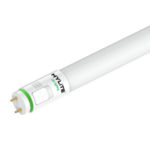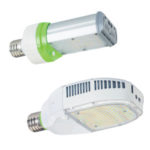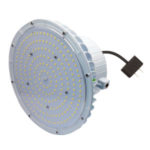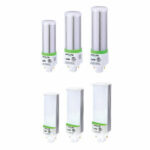Comprehensive Guide to PAR Lamps
Understanding, Benefits, and Transition to LED
As you explore options for efficient and versatile lighting, you may encounter PAR lamps. These cost-effective light fixtures have been employed in various roles, from serving as landing lights at airports to providing theatrical lighting at popular entertainment venues. Let’s delve deeper into the world of PAR lamps and explore why their combination with LED technology has created a more efficient illumination solution than ever before.
Defining PAR Lamps
“PAR” stands for Parabolic Aluminized Reflector. These lamps are directional lights often used in can lights or spotlights. Initially, PAR lamps were developed for use as headlights in road vehicles. The traditional types of PAR lamps utilize incandescent and halogen-sealed beams. However, they have a significant drawback: they generate substantial heat, which can cause the illuminated area to become uncomfortably hot.
Key characteristics of traditional PAR Lamps include:
- They are designed for directional lighting.
- They were first used as headlights in vehicles.
- They often use Incandescent and Halogen Sealed Beams.
- They generate a considerable amount of heat.

The Role of PAR Can
The PAR Can is essentially the protective housing for the PAR lamp. Depending on its application, this could be situated in a ceiling (for recessed lighting), inside a vehicle’s headlamp, or in standalone fixtures like airport runway lighting or theatrical spotlights. It’s common to place colored lenses or gels at the front of the PAR Can to create specific colored lighting effects.
Key details about PAR Can:
- It houses the PAR lamp.
- Its location varies depending on the application—it could be in a ceiling, a vehicle, or standalone fixtures.
- Colored lenses or gels can be used to produce colored light.
Advantages of PAR Lamps
Despite their simple design, PAR lamps offer numerous benefits. These lightweight, cost-effective lamps can be easily replaced when a different power or beam angle is needed. Their versatility and affordability make them popular in several contexts.
Notable advantages of PAR Lamps include:
- Their lightweight design makes them portable and ideal for traveling performance groups.
- Compared to similar can lights, PAR lamps are relatively affordable.
- Their affordability and lightweight design allow them to be used in diverse settings: churches, theaters, clubs, studios, galleries, auditoriums, convention centers, and even large arenas.
Making the Leap to LED PAR Lamps
If you’re considering investing in PAR lamps, switching to LED technology offers several advantages. HyLite LED offers a variety of LED PAR Lotus Lamps designed to fit your existing cans, so you won’t need to replace your fixtures.
Key benefits of LED PAR Lamps:
- Significant energy savings: By switching from traditional 200W PAR46 sealed beam PAR lamps to HyLite LED’s 20W Lotus lamps, you can achieve 90% energy savings without compromising light quality.
- Improved optics: LED lighting delivers enhanced clarity and brightness.
- Durability: These lamps have a rated lifespan of 60,000 hours and are approved for use in fully enclosed fixtures.
Wrapping Up: The Future is Bright with LED PAR Lamps
LED PAR lamps emerge as an ideal solution as we move towards a more energy-conscious future. They combine the simplicity and affordability of traditional PAR lamps with the energy efficiency and high performance of LED technology. If you’re seeking reliable, cost-effective, and energy-saving lighting, LED PAR Lamps from HyLite LED Lighting are the perfect choice.
Take the leap towards sustainable lighting today. Call now! 803.336.2230








